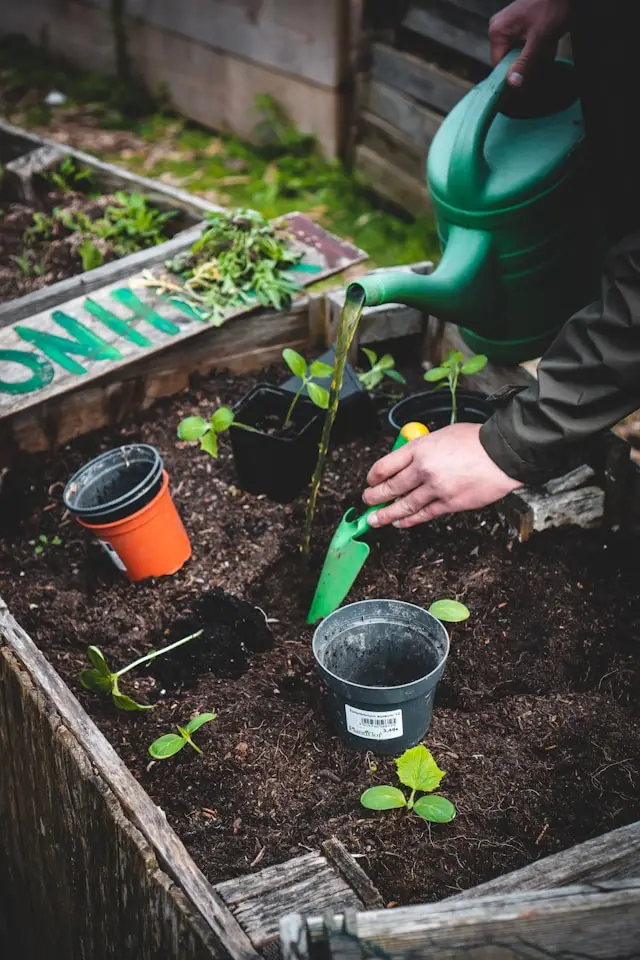Page Contents
Gardening is the practice of growing and nurturing plants, ranging from flowers and shrubs to vegetables, herbs, and fruits. It is a therapeutic activity that involves tending to soil, sowing seeds, watering, pruning, and harvesting. Gardening can take place in outdoor spaces, like backyards or community gardens, or within indoor settings, such as balconies, windowsills, and even living rooms. For the elderly, gardening offers a meaningful way to engage with nature, cultivate creativity, and remain active, contributing to their overall wellbeing.
Different types of gardening
Gardening is incredibly versatile, offering different approaches suited to an individual’s interests and physical capabilities. Some popular types of gardening for the elderly are shown below:
Container gardening – Using pots, planters, and raised beds, which are easier to access and maintain than traditional garden beds.
Herb gardening – Growing herbs like basil, mint, and rosemary that are both functional and fragrant, perfect for culinary and medicinal use.
Vertical gardening – Using trellises or wall-mounted planters to grow climbing plants, which saves space and reduces the need to bend over.
Bonsai cultivation – Growing miniature trees, which promotes patience, mindfulness, and artistry.
Terrarium gardening – Creating small, self-contained ecosystems in glass containers, ideal for those with limited mobility or space.
Vegetable and fruit gardening – Growing produce like tomatoes, strawberries, or leafy greens for nutritious, homegrown food.

Benefits of gardening
Engaging in gardening offers numerous physical, mental, and social benefits for the elderly, for example:
Physical health
Gardening activities help improve mobility, flexibility, strength, and endurance. The light exercise involved helps reduce the risk of cardiovascular diseases, obesity, and osteoporosis.Cognitive function
Gardening stimulates the mind through planning, problem-solving, and learning new skills. Activities like bonsai cultivation and terrarium design encourage focus and creativity, helping to reduce cognitive decline.Mental wellbeing
Interacting with plants and soil reduces stress, anxiety, and depression. Gardening promotes mindfulness, relaxation, and a sense of purpose.Social interaction
Community gardens and gardening clubs offer opportunities for socializing, combating loneliness and isolation.Nutritional benefits
Growing fruits, vegetables, and herbs provides access to fresh, organic produce that supports a healthy diet.Sense of accomplishment
Watching plants thrive under their care gives elderly gardeners a sense of achievement and fulfillment.
Challenges of gardening
While gardening is beneficial, there are some challenges and potential risks to consider:
Physical strain
Bending, kneeling, and lifting may cause joint pain or discomfort. Raised garden beds, ergonomic tools, and adaptive equipment can help mitigate this.Falls and injuries
Uneven ground and slippery surfaces can increase fall risk. Ensuring clear pathways and using non-slip mats can enhance safety.Heat and sun exposure
Prolonged sun exposure may lead to dehydration, heat exhaustion, or sunburn. Gardening during cooler times of the day and wearing hats, sunscreen, and light clothing are essential precautions.Cognitive challenges
Those with dementia may need supervised gardening activities to ensure safety and engagement.
How can the elderly get involved?
Gardening is flexible enough to accommodate a wide range of physical abilities. Some common, low-impact activities suitable for older adults may include:
Planting seeds
Placing seeds in pots or raised beds is a simple, rewarding task.Watering plants
Using lightweight watering cans or drip irrigation systems to maintain plant hydration.Pruning and weeding
Gentle pruning of flowers or herbs and removing weeds helps maintain the garden’s health.Harvesting
Picking ripe fruits, vegetables, or herbs, providing a sense of accomplishment.Bonsai trimming
For those who enjoy detail-oriented work, shaping bonsai trees offers cognitive stimulation.Creating terrariums
Designing small glass gardens encourages creativity and precision without requiring physical strain.

What can elderly plants?
Choosing the right plants can enhance the gardening experience.

How to start gardening for the elderly
Choose the right space
Begin with a small, manageable area like a balcony, patio, or windowsill.Select appropriate tools
Use lightweight, ergonomic tools designed for older adults.Pick low-maintenance plants
Start with easy-to-grow herbs, vegetables, or succulents.Create a routine
Set aside regular times for gardening to build a consistent habit.Ensure safety
Use raised beds, avoid trip hazards, and stay hydrated.Seek support
Join gardening groups or engage with family members to make gardening a social activity.

Conclusion
Gardening is a fulfilling and therapeutic activity that significantly enhances the wellbeing of elderly individuals. Whether through tending to a bonsai tree, growing herbs, or nurturing a small vegetable patch, gardening promotes physical health, mental clarity, and emotional satisfaction. By supporting and encouraging elderly loved ones to embrace gardening, we help them cultivate joy, purpose, and connection to the natural world.
